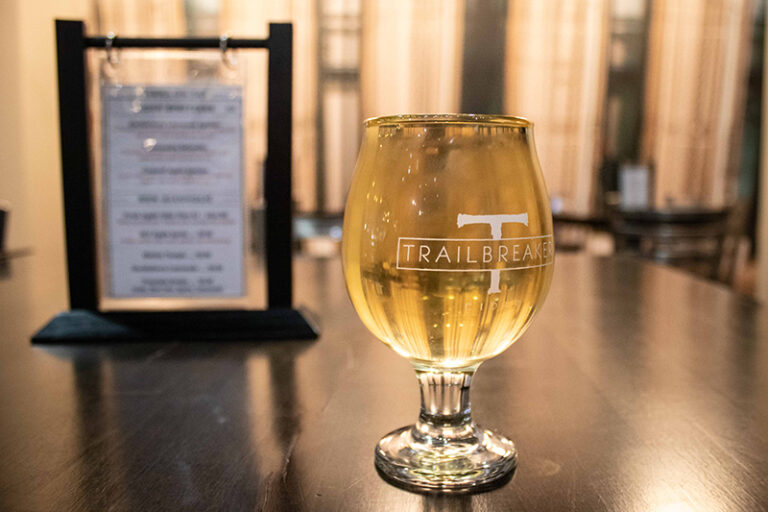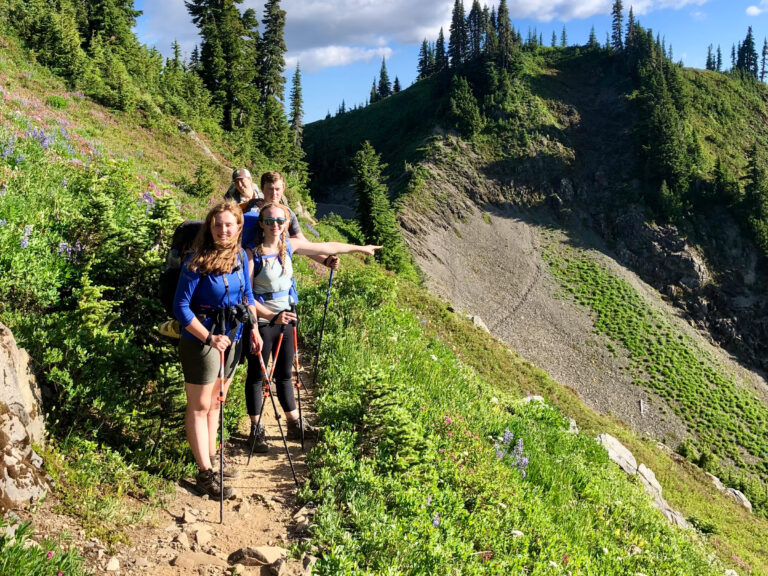By Ammi Midstokke
As someone whose spirituality is primarily limited to the worship of coffee, it may seem out of place that I’m convinced trees have souls.
I’m sure there is a more scientific explanation: tree pheromones and tree communication through root systems and diseases and parasites that make them droop and dry out as though they were as broken hearted about climate change as we are. The scientists and authors who delve into the complexities of trees are tiny flesh apostles using the vocabulary of understanding to save the forests through the persuasion of connection. We should listen to them.
For all the time us outdoor folks spend among the trees, most of us know embarrassingly little about them. We crave their shade in the summer heat, appreciate the way their roots hold the soil of our slopes in place, hear the music of wind in their boughs when camping, use the alpine ghosts of them to hang our bear bags. How do we reciprocate?
I’m not actually sure what a tree’s love language is beyond Shel Silverstein’s Giving Tree, who was arguably in an unhealthy co-dependent situation. Poor Shel has probably been cancelled for the promotion of the blatant exploitation of unwittingly generous trees. I have tried various attempts at affection toward trees I have planted with limited results (suggesting they are less fond of Robert Frost and more fond of a good watering). I suspect like many of us, the trees would just like to be seen and heard.

I think of Peter Wohlleben and The Hidden Life of Trees, who touched us with his anthropomorphizing of the forests. “When a tree falls in the forest,” he wrote, “there are other trees listening.” He gave trees emotions and generational relationships, not because he presumed trees have feelings, but because we humans cannot seem to appreciate anything we cannot understand through our own myopic means. For us to relate to the trees, we have to make them more like us.
As a forest, we can assign them value: commercial, environmental, visual. But reading the works of those who try to speak for the trees, I wonder if we oughtn’t develop interpersonal relationships with them as individuals. If my tree could have a conversation with me, what would it say? We would certainly commiserate about the raucous of those unruly squirrels and perhaps judge the neighbors for all their mounted game cameras. (Why not just ask the trees who has been by?)
As I peruse my new neighborhood of trees, I realize I don’t even know what kind of trees they are, not to mention their needs. They seem to be growing too close together and those ponderosas are always like overachieving middle children: Hogging all the sunlight and growing faster than everyone else. The scraggly runts stuck below them are malnourished, unseen. The arborist says I need to thin them, but I cannot bring myself to choose who deserves to live. I am certain they each have a story.
The prolific author, Anthony Fredericks, just released a new book titled In Search of the Old Ones, in which he explores and exposes the history of some of our oldest trees and groves. What does a tree know when it has stood for fifteen centuries? What stories are in its bark? What miracles and sorrows has it witnessed?
I stand beneath a broad pine in my own forest. Before I lived here, high-schoolers came and drank Pabst in secret campouts. The tree watched their shenanigans, probably in silent prayer that they didn’t leave a cigarette butt burning. Before that, this one escaped logging for no reason other than a generous selection process. Long before that, its seed washed here in the Missoula floods. It is the grandchild of eons of migration.
I imagine how deep its roots crawl, what tangled family gatherings it has beneath the soil. I wonder what it whispers to other trees with the scents of warning: Change your smell, the beetles are coming. I think it might be a good idea to name it, because it is harder to slaughter a named thing. What name is good enough for a tree?
We should read the books of those who speak for the trees. If we learned about the trees the way we learn about civics and math, about computer science and debate, maybe we’d learn the importance of saving them. Maybe we’d recognize we have much in common (such as sharing the same planet).
A woman comes to see my new home, tucked in a small clearing of this unmanaged mayhem of forest I prune with small clippers and scissors. From the right angle and the right height, one can see a glimpse of the distant river. She dances around the patio to peer between the towering pines.
“Are you going to cut some trees for a view?” she asks.
“The trees are my view,” I say.
Having survived a years-long project of building a house, Ammi Midstokke now finds herself enjoying literature that is less about carpentry technique and more about the world beyond power tools.













